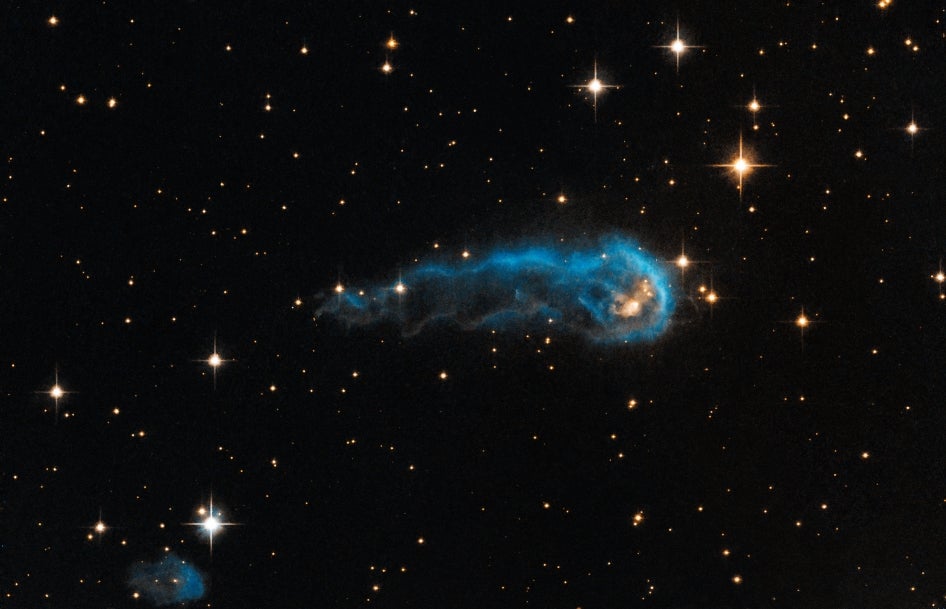Nasa spots a 'Cosmic Caterpillar' in the middle of metamorphosis
Light-year-long proto-star is battling the radiation from its neighbours to try and mature into a star

Nasa’s Hubble telescope has spotted a light-year long cloud of interstellar gas and dust that they have dubbed a ‘Cosmic Caterpillar’.
And like its namesake, this caterpillar is in the middle of a metamorphosis with scientists eagerly watching to see what manner of beast will finally emerge.
The head of the object where the matter is most dense is a protostar, an early stage in the evolutionary life of the star, where dense spots of matter slowly attract more material through gravity to become young stars.
However, astronomers are doubtful that the caterpillar will ever pull itself together and gather enough material to become a star in its own right.
Standing in the way are 65 O-type stars - the brightest type of stars known to scientists. These objects, seen to the right of the below image, are busily blasting the caterpillar with ultraviolet radiation, smearing its matter across space and sculpting out its current shape.
These 65 O-types are part of the Cygnus OB2 association, a cluster of over 500 stars (mostly comprised of the less-luminous B-type) with a total mass 30,000 times that of our sun.
The caterpillar – also known by its less catchy designation, IRAS 20324+4057 – might still gather material quicker than it is losing it, but scientists are unsure of the final outcome.
The whole cosmic drama is taking place 4,500 light years away in the Cygnus constellation.
Subscribe to Independent Premium to bookmark this article
Want to bookmark your favourite articles and stories to read or reference later? Start your Independent Premium subscription today.

Join our commenting forum
Join thought-provoking conversations, follow other Independent readers and see their replies